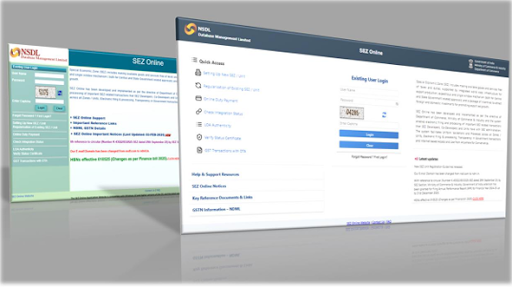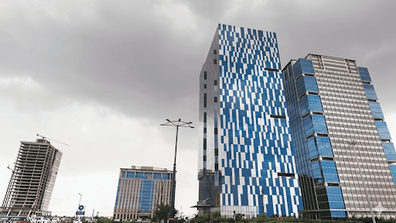Everything You Need to Know About Special Economic Zones
- GIFT CFO
- Jun 17
- 4 min read
Special Economic Zones (SEZs) are designated areas within a country that possess special economic regulations that differ from other areas in the same country. These zones aim to attract foreign direct investment by offering favorable conditions for businesses. In this blog post, we’ll explore everything you need to know about special economic zones, including their benefits, challenges, and examples from around the world.
Understanding Special Economic Zones
Special Economic Zones have grown in popularity as countries seek to stimulate economic growth, enhance export capabilities, and attract foreign investment. SEZs typically provide businesses with specific privileges such as tax incentives, simplified customs regulations, and relaxed labor laws.
Countries like China pioneered the SEZ concept, with the establishment of zones like Shenzhen. Since then, many nations have followed suit, leading to the global spread of this economic model. Understanding the operational mechanics of these zones is crucial for businesses considering expansion in foreign markets.

Benefits of Special Economic Zones
One of the most significant advantages of SEZs is their ability to boost economic growth. They provide a platform for foreign investment, which not only brings in capital but also technology and expertise. Here are some key benefits:
Tax Breaks: Many SEZs offer reduced corporate tax rates or exemptions from certain taxes, making them an attractive option for businesses looking to lower their operational costs. For instance, companies in the Dubai Free Zones often enjoy a 100% tax exemption for several years.
Regulatory Ease: Businesses operating within SEZs usually face fewer bureaucratic hurdles, enabling them to establish and expand quickly. This regulatory flexibility can significantly reduce the time it takes to set up operations.
Infrastructure Development: Governments often invest heavily in infrastructure within SEZs. This means businesses have access to advanced facilities and logistics, which can enhance productivity and operational efficiency.
Job Creation: By attracting businesses, SEZs also stimulate job creation in the local communities. The establishment of industries and services leads to a demand for a skilled workforce, promoting employment opportunities.
These benefits collectively encourage economic diversification and stability in the regions where SEZs are established.

Challenges Faced by Special Economic Zones
Despite the advantages, special economic zones are not without their challenges. Here are some key issues that often arise:
Regulatory Compliance: While SEZs may have relaxed regulations, staying compliant with local laws outside the zone can be complex. Businesses must navigate a dual regulatory environment, which can lead to misunderstandings and legal issues.
Sustainability Concerns: Rapid industrialization in SEZs can lead to environmental degradation. The rush to develop these zones may overlook ecological considerations, impacting local ecosystems and communities.
Economic Inequality: SEZs can sometimes exacerbate economic disparities. The concentration of wealth and resources in these zones may lead to neglect in surrounding areas, contributing to regional inequality.
Dependency on Global Markets: Many SEZs rely heavily on foreign investment and markets. Economic downturns in the global market can have a direct impact on these zones, leading to job losses and business closures.
Understanding these challenges is essential for governments and investors to develop strategies that promote long-term success and sustainability in SEZs.

Successful Examples of Special Economic Zones
Special Economic Zones have been successfully implemented in various countries, each tailored to the local economic context. Here are a few notable examples:
Shenzhen, China: As one of the first SEZs in the world, Shenzhen has transformed from a small fishing village into a major tech hub. It attracts companies like Huawei and Tencent and has served as a model for other nations.
Dubai Free Zones, UAE: With over 20 free zones, Dubai has become a magnet for businesses. The zones offer 100% ownership for foreign investors and excellent logistics facilities, helping the emirate diversify its economy away from oil dependency.
Gujarat International Finance Tec-City (GIFT City), India: GIFT, located near Ahmedabad, aims to provide state-of-the-art infrastructure for finance and technology services. The zone offers various benefits, including tax incentives. Companies looking for gift city services can find numerous opportunities here.
These examples illustrate how SEZs can drive regional development and innovation, contributing to the global economy.
How to Invest in Special Economic Zones
Investing in Special Economic Zones can be a lucrative opportunity for businesses. Here are actionable tips for potential investors:
Research the Region: Understand the local economy, regulations, and market conditions. Each SEZ will have its unique characteristics and benefits.
Networking: Establish connections with local businesses and government agencies. Building relationships can provide insights and assistance in navigating the investment landscape.
Seek Legal Advice: Ensure compliance with both local and international laws. Legal expertise is essential to address the complexities related to operating in SEZs.
Assess Risk: Be aware of the potential risks associated with investing in an SEZ. This includes understanding the local political climate and economic conditions.
By following these guidelines, investors can make informed decisions and maximize the benefits of their investments in Special Economic Zones.
The Future of Special Economic Zones
As globalization continues to shape economies, the role of Special Economic Zones will likely expand. Countries may increasingly utilize SEZs to attract investment, foster innovation, and support job creation. However, addressing the challenges they face will be essential for long-term success.
Governments must strive for balanced development by ensuring that SEZs contribute positively to surrounding communities and the environment. With thoughtful planning and execution, SEZs can become engines of economic growth while promoting social and environmental sustainability.
In conclusion, Special Economic Zones are more than just geographical areas; they represent a strategic approach to economic development, with the potential to reshape global commerce and investment landscapes. Whether you are a business looking to expand or a country considering setting up an SEZ, understanding the dynamics at play can help you navigate this complex yet rewarding terrain.


























































































Comments